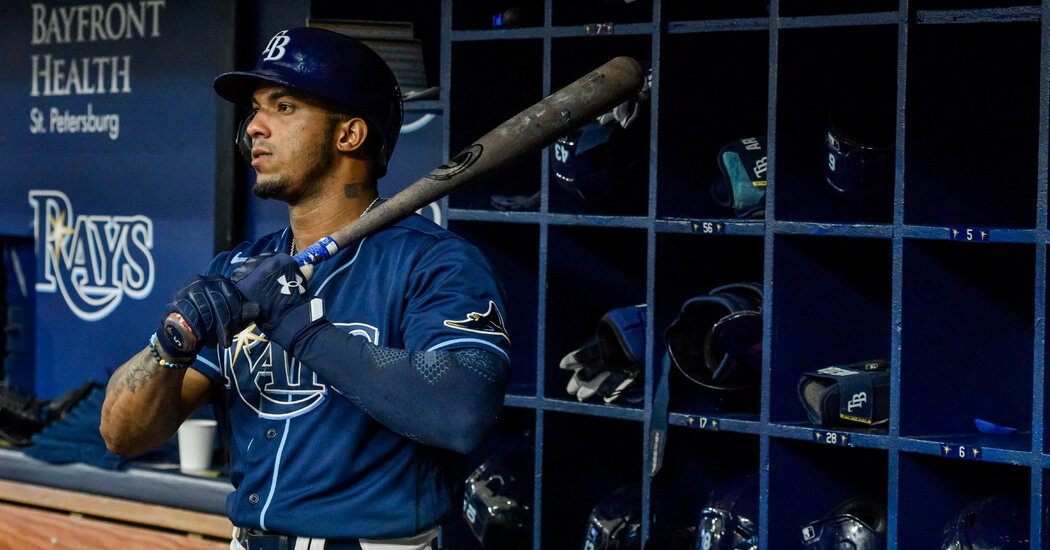
The Thanksgiving leftovers are still in the fridge, and Max Scherzer is already on his way to the Mets. That alone proves that the baseball off-season, which tends to unfold at a plodding pace, has come alive.
But is this a blizzard of spending, or merely a flurry? Is free agency now a winter wonderland for players, or is it barely snowing at all? Either way, the forecast calls for a lockout when the collective bargaining agreement expires Wednesday at midnight, Eastern time.
It would be the first work stoppage since August 1994, when the owners baited the players into a strike that canceled the World Series. At least this timing is better, with spring training more than two months away. But failure to reach a new C.B.A. would trigger a transaction freeze, which explains all the recent activity. Free agents want to find a home before settling in for the long, cold, lonely winter.
It shouldn’t have to be this way. Maybe the owners and players will settle all their differences quickly, but nobody expects that. The game’s economics deserve a careful, thoughtful recalibration. But it’s hard to believe that the system is flawed enough to shut down the industry.
Since the last negotiation, after the 2016 season, the owners have pulled off a neat trick of lowering players’ salaries as a whole. The average salary fell by more than 6 percent, to $4.17 million, from opening day in 2017 to opening day in 2021. Franchise values continue to rise, of course, because so many billionaires want in.
Nobody — players or owners — is crying poor. The players have been saying for years that the labor agreement discourages teams from spending by offering incentives to lose, which offends their competitive instincts. They also emphasize that if teams spend less on veterans, then younger players should be paid better.
Both are sensible points. Yet several losing teams have been turning to free agency this month to spend their way back to contention. And the Tampa Bay Rays just gave a $182 million contract to Wander Franco, who has played 70 games in the majors.
“The Rays have given me the support that I need, the development, the people that they have here,” Franco said through an interpreter at a news conference at Tropicana Field on Monday. “I wish to stay here for my whole career.”
It doesn’t always work out that way. The players who signed baseball’s first $100 million, $200 million and $300 million contracts — Kevin Brown, Alex Rodriguez and Giancarlo Stanton — were all traded to the Yankees with multiple years left on their deals. But Franco has set another new standard: most money guaranteed to a player with less than a year of major league service.
The trade-off is that Franco gave up several years of free agency, when the open market could have determined his worth. But when a 20-year-old player sets himself up to earn $223 million before his 33rd birthday (the deal includes a $41 million option for a 12th year), it seems like a sound decision.
Here are some other noteworthy, widely reported November contract agreements (some will not be official until the parties sign off on contractual language and medical details):
Perhaps the timing of all these moves is no coincidence. A flood of early deals could create the impression that everything is fine. A lockout would then shut off the cash spigot, leaving unsigned players clamoring for a labor deal.
The owners have proposed a payroll minimum for all teams — accompanied, naturally, by a lowering of the luxury tax threshold at the top of the scale. But the sport actually has more competitive balance than the budget hawks want to admit: 15 different franchises have won the World Series since 2001, and that’s not including the well-run, perennial contenders Tampa Bay and Milwaukee. The N.F.L., the N.B.A. and the N.H.L. have had fewer different champions in the same time.
The players also overstate some of their problems. Yes, young stars are underpaid relative to the value they provide. But lower-payroll teams need them to have a chance to win, and higher-payroll teams need them to more easily afford the expensive players. And some teams benefit by showing restraint on the open market; not every free-agent contract works out.
The most significant obstacle to the game’s future is not the salary structure, anyway, but the play on the field. The players and the owners need to find a way to make the product as entertaining as it can be. As hard-throwing pitchers and high-strikeout hitters continue to get big contracts, that may be the biggest challenge of all.



